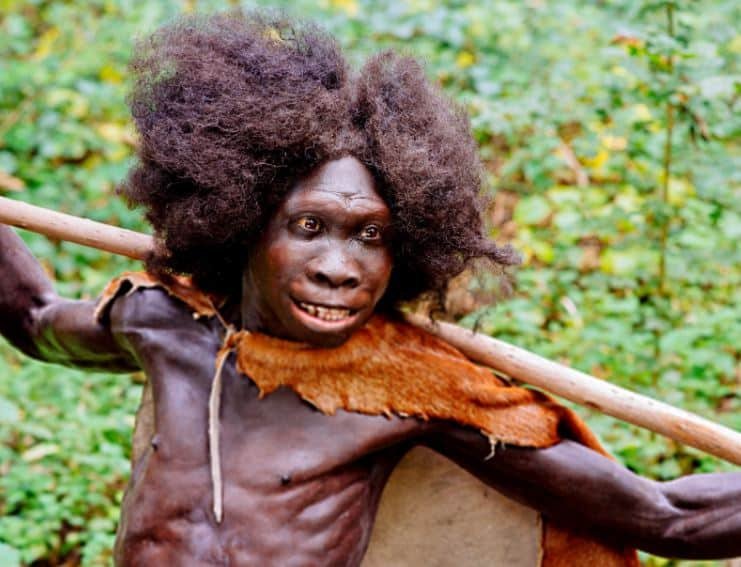News
Who was Turkana human? Early Human Skeleton Turkana Boy

In 1984, a team of paleoanthropologists working in the desert badlands of Kenya discovered the complete early human skeleton ever found. This skeleton would come to be known as Turkana Boy, and it would provide anthropologists with invaluable insights into the early evolution of our species. Who was Turkana Boy, and what can his discovery tell us about the origins of human beings? In this blog post, we’ll take a closer look at this remarkable specimen and explore some of the key questions it raises over three decades after its discovery.
[lwptoc]
Who was Turkana Boy?
Turkana Boy was a young male who lived approximately 1.6 million years ago in Kenya. He was between the ages of 9 and 12 when he died and was around 1.5m tall (about the height of an average 10-year-old today). He would have been a slim and agile young man, evidenced by his long limbs and gracefully proportioned body.
The discovery of Turkana Boy was a momentous event in the history of paleoanthropology. Until then, the only early human fossils were fragmentary and often severely damaged. The fact that Turkana Boy was preserved so well – with his bones largely intact and in their correct anatomical positions – made him a precious source of information about early human anatomy and physiology.
What can Turkana Boy tell us about the origins of human beings?
Turkana Boy is an essential link in the human evolutionary family tree. He was part of a group of early humans known as Homo erectus, which means “upright man.” Homo erectus was the first human species to become genuinely global, with fossils found in Africa, Europe, and Asia.
While Turkana Boy is an essential link to our past, he also raises some critical questions about the origins of human beings. One of the most intriguing mysteries is why Homo erectus went extinct. This species was once widespread and successful, yet no Homo erectus alive today. One possible explanation is that Homo erectus was replaced by a new and improved human species – Homo sapiens.
We still have much to learn about the early evolution of our species, but Turkana Boy is an integral part of that story. Through him, we can begin to piece together the puzzle of who we are and where we came from.
Google doodle turkana human:
In celebration of the 35th anniversary of the discovery of Turkana Boy, Google has created a special doodle featuring this early human ancestor. The doodle shows Turkana Boy walking upright against a backdrop of the Kenyan landscape. This image is a powerful reminder of our shared humanity and the common bonds that connect us. However, it also highlights that Turkana Boy is a critical link to our past, and his story raises important questions about human beings’ origins.
The discovery of Turkana Boy was a momentous event in the history of paleoanthropology. Until then, the only early human fossils were fragmentary and often severely damaged. The fact that Turkana Boy was preserved so well – with his bones largely intact and in their correct anatomical positions – made him a precious source of information about early human anatomy and physiology.
However, Google doodle digs into the Turkana human ancestry more than his looks. They also included information about his discovery and what he can tell us about the origins of human beings.
Facts about the Turkana human:
- The Turkana Boy is the complete early human skeleton ever found. He lived around 1.6 million years ago in what is now Kenya.
- The Turkana Boy was about 12 years old when he died. He would have been around 1.85m tall if he had lived to adulthood.
- The Turkana Boy is thought to be a member of the species Homo erectus. This is the first time this species has been identified from a complete skeleton.
- The Turkana Boy is an important discovery because he provides us with vital information about the early evolution of our species.
- The Turkana Boy is just one of many important discoveries made by paleoanthropologists working in the Kenyan desert. Other vital finds include the first-ever complete skeleton of an adult male Homo erectus, which was discovered in 1985.
- The team has also found numerous fossils of early human ancestors, including the 3.2 million-year-old skeleton of Lucy, which is the complete fossil of an early human ever found.
- The discoveries made by the team have helped to shed light on a critical period in human history and have informed our understanding of the evolution of our species.
- The Turkana Boy is a remarkable specimen, and his story continues to fascinate and inspire people all over the world.
Conclusion:
The Turkana Boy is a priceless source of information to anthropologists regarding our species’ evolutionary history. The recent findings in the Kenyan desert are groundbreaking. They have given new insight into a crucial period of human history and helped to piece together how our species came to be.
Check out: The Worst Medical Malpractice Cases In Recent History













